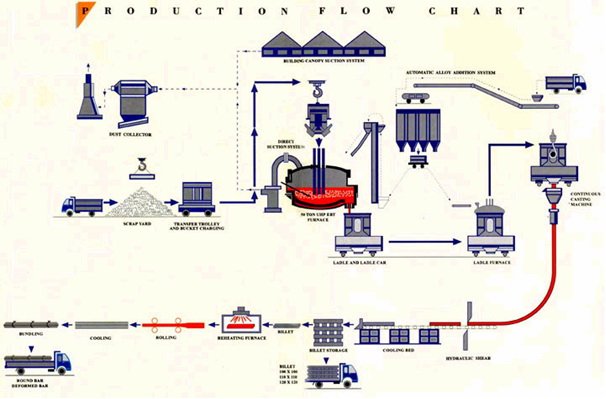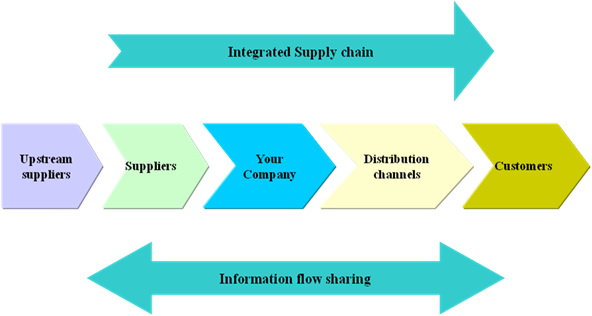MORE FREE TERM PAPERS MANAGEMENT:
|
||||||||||||||||||||||||||
ECONOMIC DRIVERS OF SUPPLY CHAIN CHOICES
Logistics management is concerned with the effective movement of goods
from point of production to point of consumption and managing the associated
services. Two aspects of such movement are noteworthy when non-bulk goods
are moved over long distances: first, goods are generally containerised,
and this is especially true for higher value goods. Second, the movement
of goods in such cases usually involves more than one major mode of transport.
Economic drivers
Economic hardship produced intense pressure to reduce costs across supply
chains. Unpredictable demand for goods and services, increased customer
demands, and volatile commodity .
Stainable supply chain management practice. The changes we are dealing
with today are not for a season. Some argue that continual economic and
social change is the “new normal. While the term “sustainable” has been
used lately in the context of environmental and green issues, it also
succinctly conveys the need to build and develop approaches and techniques
for managing and operating the supply chain.
We have identified five drivers that constitute the core of sustainable
practice in supply chain management. These drivers are optimization, synchronization,
profitability, adaptability and velocity.
1.optimization: it is the alignment of global supply
chain resources both tangible and intangible, owned or outsourced to facilitate
the success of supply chain members.
2.synchronization: it is the ability to coordinate, organize
and manage end-to-end supply chain flows — products, services, information
and financials.
3.profitability: it is the result of creating value through
supply chain activities. Asset performance, working capital and returns
on investment for infrastructure, technology and people are some of the
critical parts that create value in a global environment.
4.adaptability: it is the degree to which respective
supply chain members can change practices, processes and/or structures
of systems and networks in response to unexpected events, their effects
or impacts.
5.velocity: it is the speed at which end-to-end flows
occur in the supply chain. These five drivers of sustainable practice
should be a priority. It is an exercise that will help determine if your
supply chain can adapt and be successful in today’s “new normal” of continual
economic and social change.
Scale and scope of economic drivers
One of the characteristics which distinguishes network industries is the
presence of substantial economies of scale and scope. Economies of scale
alone have more of an impact on market structure than on market in the
case of a single-product natural monopoly, there will normally be a single
producer. However, in certain circumstances sufficient substitution in
consumption might exist between fixed and mobile end user network access.
In this case, the existence of economies of scale in a single production
process. Would not, itself, be determinative of market structure.
Supply chain
A supply chain is a system of organizations, people, technology, activities,
information and resources involved in moving a product or service from
supplier to customer. Supply chain activities transform natural resources,
raw materials and components into a finished product that is delivered
to the end customer.
Supply chain modelling
There are a variety of supply chain models, which address both the upstream
and downstream sides. The supply chain operations reference model, developed
by the supply chain council, measures total supply chain performance.
It is a process reference model for supply-chain management, spanning
from the supplier's supplier to the customer's customer. It includes delivery
and order fulfillment performance, production flexibility, warranty and
returns processing costs, inventory and asset turns, and other factors
in evaluating the overall effective performance of a supply chain.
The global supply chain forum introduced another supply chain model.while
each process will interface with key customers and suppliers, the customer
relationship management and supplier relationship management processes
form the critical linkages in the supply chain.
The american productivity & quality center process classification
framework sm is a high-level, industry-neutral enterprise process model
that allows organizations to see their business processes from a cross-industry
viewpoint.
Supply chain management
A supply chain is a network of facilities and distribution options that
performs the functions of procurement of materials, transformation of
these materials into intermediate and finished products, and the distribution
of these finished products to customers. Supply chains exist in both service
and manufacturing organizations, although the complexity of the chain
may vary greatly from industry to industry and firm to firm.
Supply chain management is the combination of art and science that goes
into improving the way your company finds the raw components it needs
to make a product or service and deliver it to customers. The following
are five basic components of supply chain manqgement.
1. Plan—this is the strategic portion of supply chain
managment(scm). Companies need a strategy for managing all the resources
that go toward meeting customer demand for their product or service.
2. Source—next, companies must choose suppliers to deliver
the goods and services they need to create their product.
3. Make—this is the manufacturing step. Supply chain
managers schedule the activities necessary for production, testing, packaging
and preparation for delivery. This is the most metric-intensive portion
of the supply chain—one where companies are able to measure quality levels,
production output and worker productivity.
4. Deliver—this is the part that many scm insiders refer
to as logistics, where companies coordinate the receipt of orders from
customers, develop a network of warehouses, pick carriers to get products
to customers and set up an invoicing system to receive payments.
5. Return—this can be a problematic part of the supply
chain for many companies. Supply chain planners have to create a responsive
and flexible network for receiving defective and excess products back
from their customers and supporting customers who have problems with delivered
products..

Production flow chart
Typical supply chain

Typical supply chain
The value of supply chain management
The value of supply chain management always starts with customers. They
want shorter times to market for new products, lower stock, obsolescence
and cash commitments and lower unit costs of purchasing and manufacturing.
At the same time, and with no compromise, they want increasing variety
and choice, wider distribution and increased customer and market responsiveness.
The value of supply chain management is that it can provide a pathway
to these seemingly contradictory goals. It can be descried as industrial
alchemy.
The typical benefits of an excellent supply chain
1. Reduction in total logistics costs as a percentage of revenue (material
acquisition, order management, inventory costs and finance/it support).
2. Reduction in order-fulfillment lead time.
3. Reduction in inventory.
4. Improvement in meeting commitment dates.
Supply chain decisions
There are four major decision areas in supply chain management:
1. Location,
2. Production,
3. Inventory, and
4. Transportation (distribution)
Advantage $ dis advantage of supply chain
Advantages– an integrated supply chain gives greater
flexibility, ensures better control on the supply chain, thus making it
relatively easy to implement process or product innovations, minimise
the exposure to the risk of demand and price fluctuations, and facilitating
faster decision-making and implementation process.
Disadvantages– inaccessibility of cheaper feedstock in
market, and market dependence during the initial 3-4 years of feedstock
maturation.
References :
Arntzen, b. C., brown, g. G., harrison, t. P., & trafton, l. L. (1995). Global supply chain management at digital
Equipment corporation. Interfaces, 25(1), 69-93.Cohen, m. A., & agrawal, n. (1996). An empirical investigation of supplier management practices. In t. W. S.
Operations and information management department, university of pennsylvania (ed.) .Http://www.sls.wau.nl/mi/publications/index2.html
Http://biotech.iastate.edu/biotech_update/oct_97.html#low_sat.
Http://www.extension.umn.edu/distribution/businessmanagement/df7539.html
Http://money.cnn.com/magazines/fortune/fortune_archi.
